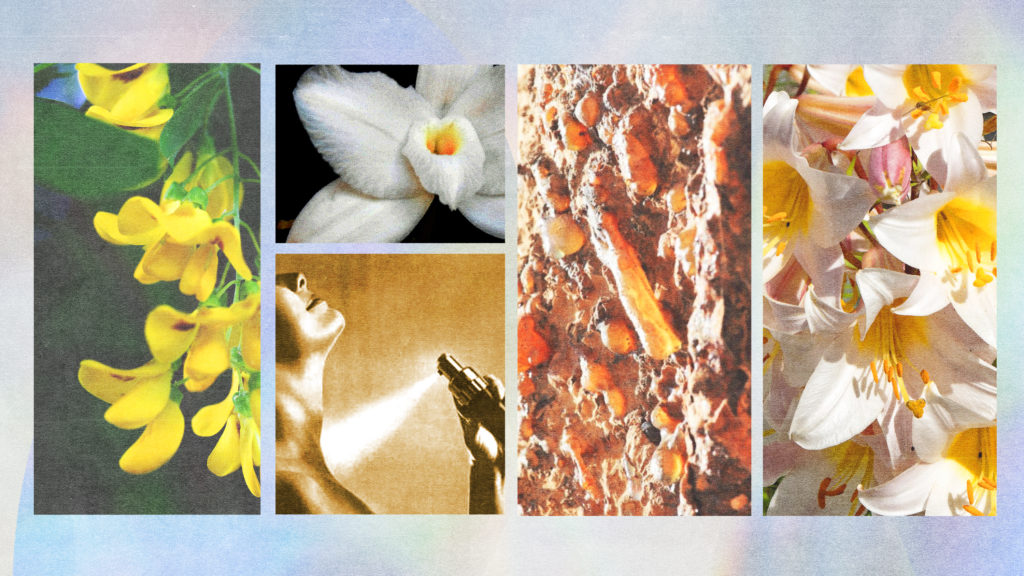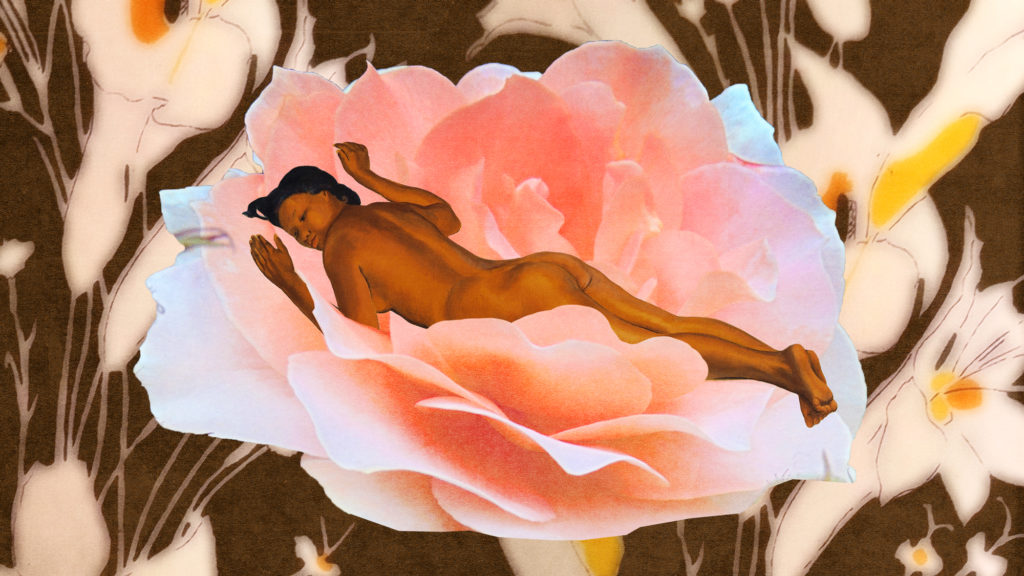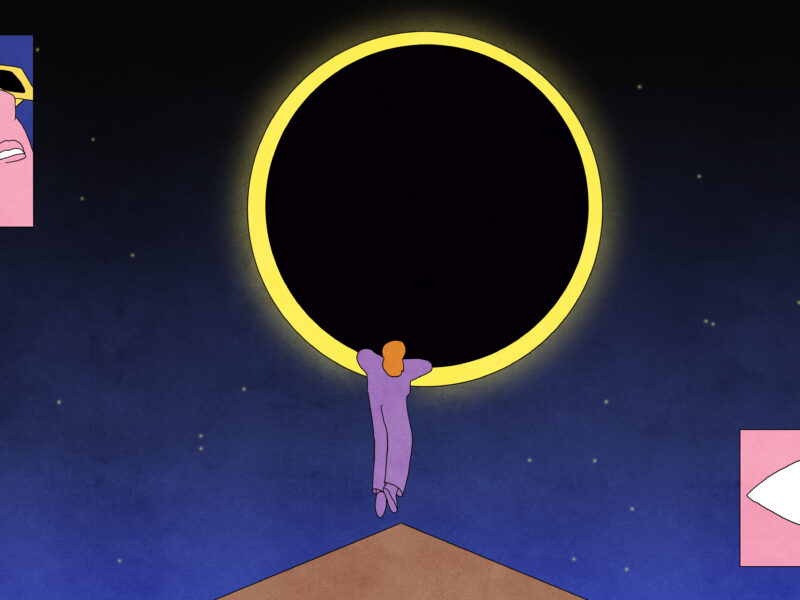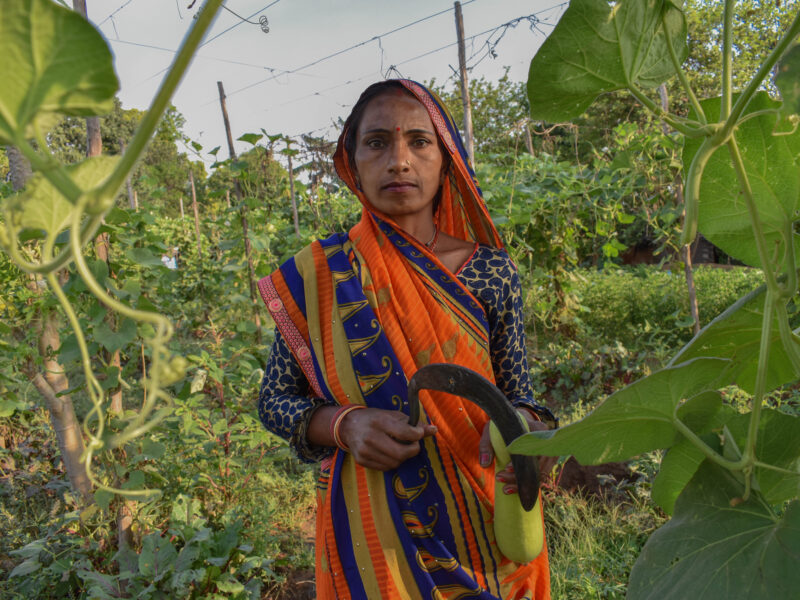The women of color writing new narratives in perfumery.
When I travel, my souvenir of choice comes in olfactive form: a TSA-compliant bottle of perfume that embodies the spirit of the place I’m visiting, so that I can return to it later in my mind. One cherished example, from a trip to Tokyo, smells like a cup of green tea enjoyed in the cooling clarity of a shaded garden. To someone who grew up surrounded by tea rituals, it also smells like coming home. At its heart is a photorealistic green tea accord—soft yet assertive, bright and smooth at once, bitterness and sweetness in an entangled dance until the end. The scent was composed by someone who understands tea in all of its kaleidoscopic facets: Satori Osawa, a licensed Japanese tea master and one of the country’s few recognized perfumers. She was also the first East Asian perfumer I’d ever met.
Perfumers, admittedly, are hard to come by. They work in chemistry labs sheltered from the public eye and, for the most part, anonymously. But they also tend to hail from the same small pocket of the world, even though their work caters to audiences all over the globe. Looking at headshots of famous perfumers feels like playing a difficult game of Guess Who: From Jean Claude Ellena (Hermès Terre d’Hermès, Bulgari Thé Vert) to Olivier Cresp (Thierry Mugler Angel, YSL Black Opium), the creators behind some of the biggest household names in perfumery are all born in France—often into perfumer families—and trained there, too.
France is hardly the only place in the world with a rich cultural scent heritage; nevertheless, the traditional perfumer’s mold continues to be cast in the French man’s image. For those who try to challenge this convention, the barriers to entry unpack like nesting dolls: gender, race, nationality, lineage, and, at the heart of it all, access. “When I first started out and wanted to establish my brand name, it was incredibly difficult,” says Chavalia Dunlap-Mwamba, self-taught perfumer and owner of Texas-based fragrance brand Pink MahogHany. Whether it was finding other Black perfumers in the industry to reach out to, or bulk manufacturers and compounders to scale her business, helpful information proved to be scant and elusive. She found herself bootstrapping as a complete outsider.
For many, the barriers to perfumery are also profoundly financial. From minimum order quantities to the price of raw materials—250ml of jasmine absolute, for example, can retail for over a thousand dollars—every aspect of the industry comes with a price tag to choke on. “Perfumery is an expensive hobby, and historically, only the very privileged have been able to partake in it,” says Loreto Remsing, creator of artisan brand LAROMATICA. Learning the tricks of the trade is equally prohibitive, and usually involves moving to France to study at one of its prestigious fragrance institutions. For Remsing, an immigrant to the United States who faced poverty growing up and ended up putting herself through college, a formal perfume education was never an option; and even if it had been, she would have felt out of place. This exclusionary feeling is shared by Lula Curioca, an olfactory artist and perfumer based in Mexico City, and also pushed her to pursue the self-taught route. “[It was] like going against water all the time,” Curioca admits. “I was like, ‘That gate, at the moment, I can’t cross it.’”

In conversations about the industry, this image of gates comes up time and time again. “[Historically,] women of color haven’t been given the opportunity to come up in perfumery,” says Yosh Han, self-taught perfumer and creative director at Scent Trunk, a fragrance publishing house. “Many have been in marketing or sales roles only.” Disregarding the rules of convention, she launched her eponymous perfume brand in 2004, as an Asian-American female with no formal training. She recalls the industry reception being one of shock: “Everybody was like, ‘Who the fuck is this girl?’” Han, who now champions other independent and self-taught perfumers by commissioning their work for Scent Trunk, is a vocal advocate for doing things the untraditional way. She likens it to good cooking: talent can come from any kitchen, not just Le Cordon Bleu’s.
Access through the well-trodden pathways, too, comes with asterisks and caveats for those who do not fit the profile. “It’s really guarded. And still, despite what a huge industry it is,” says Anne Serrano-McClain, founder of independent perfume brand MCMC Fragrances. She’s what the industry dubs “classically” trained, through a year-long professional degree offered by the Grasse Institute of Perfumery (GIP), a rarefied and renowned perfume school located in the South of France, that only accepts 12 students a year. When she enrolled in 2009, most of her fellow students were from Europe, with familial ties to the industry; one of them was the aforementioned Olivier Cresp’s son. “You are expected in the industry to follow a very particular path,” she says. “I walked away with the technical skills, but I also walked away with this understanding that made me passionate [about] breaking that mold a little bit.”
Dana El Masri, a Lebanese-Egyptian-Canadian perfumer who launched her line Jazmin Saraï shortly after graduating from GIP, recalls clashing with her French teachers and classmates throughout her time there. Often, it came down to cultural differences as a person of color in a traditional Euro-centric environment. In one instance, while working on a group project for a perfume that she was leading—inspired by a luxury hotel in Siwa, an oasis in northern Egypt—her unusual choice of fragrance materials was called into question as being “too oriental.”
Here, “oriental” is accompanied by emphatic air quotes. Until recently, the term was a part of the perfume industry taxonomy—a fragrance family that encapsulates scents with warm, resinous, spicy facets, featuring materials such as vanilla, labdanum, and tonka bean. The classification has always played an othering role in perfumery, used to describe scents that represented fantasies of foreign places. “It means nothing from an olfactory perspective,” El Masri explains. “You can eliminate it entirely and break it down into balsamic, ambery, powdery, and gourmand.” In school, she was praised for being skilled at making “oriental” perfumes—until those compositions started to smell too foreign. “We were playing around with materials that you find in ancient Egypt. So I was using myrrh, I was playing with papyrus. Palm frond. Carob. Jasmine,” she recounts. “So yeah, it was going to be a little ‘oriental.’”
Today, due to growing pressure from industry advocates—including many of the perfumers featured here—a term that was once deemed part of perfume tradition is now understood as terribly outdated and offensive. In 2021, the perfume database Fragrances of the World updated all instances of “oriental” to “amber,” as did the perfume encyclopedia Fragrantica. Some brands and retailers followed suit. Still, many haven’t, and the industry remains riddled with disparity and ripe for change. “If a [fragrance] company cannot acknowledge a word description because they’re upholding colonial white supremacist beliefs,” asks Han, “how is a woman of color ever going to get to leadership positions?”
To amplify and uplift the presence of BIPOC creators within the industry, Han, El Masri, and their network of advocates have assembled resources like Decolonize Scent and the Diverse Talent in Fragrance & Perfumery Database. It is, after all, in perfume companies’ best interests to expand their pool of talent; diversity begets innovation and creativity. And when perfumers are hired from all over the world, not just the microclimates of the South of France, they distill their experiences and unique olfactive associations into their work. “When you bring in women of color, you are bringing in unique cultural experiences, traditions, history, heritage, and stories,” says Remsing, who attributes the inspiration for some of her creations to a childhood of living on isolated farms, surrounded by herbs, plants, and folk medicine.
Before I had the chance to visit Satori Osawa, I had smelled a dozen green tea scents—all pleasant and lovely, but none that hooked me by the heart. When I smelled her specific translation of green tea—with the sparkle of a portrait painted by a person who loves the subject—the rest of them dropped out of qualification.

Perfumes have always been prized for their transportive properties, how they allow us to return to a beloved memory, or armchair travel to new surroundings. This is why fragrance marketing copy is saturated with references to fabled worlds and exotic destinations, to odysseys and adventures. But as the olfactory terrain of fragrance becomes more and more diverse, those responsible for creating these concepts remain the same.
To the brands who capitalize on the allure of the unfamiliar yet default to working with the old guard, El Masri presents an alternative perspective: “Don’t you think you’re going to get more of an accurate and potentially even more soulful, passionate, connected interpretation of what you’re trying to express,” she asks, “if it was made with a local [perfumer] or someone who understands the culture on a much deeper level?” This is not to say that only people who’ve lived those experiences should get to tell their stories, El Masri clarifies. “I’m just saying that we need to give those people that chance.”
For the women who’ve plodded their own paths in perfumery, a shared belief is the moral imperative to create more opportunities for the scent-curious, whomever they may be. Dunlap-Mwamba, who also works as an educator, sees it as more than a DE&I concern—it’s the missing representation that helps close gaps for the next generation. “My mission is to create more visibility for perfumers of color,” she says. “Because what happened with me is that I didn’t know this space existed until I was grown.” If fragrance became incorporated into elementary school curriculums alongside electives like art or dance, she suggests, students would be exposed to the different facets of the fragrance industry at a younger age—which broadens their avenues in the job market.
Serrano-McClain has a similar mission: to pass on her technical training from the GIP to those in less privileged positions. “We don’t treat perfume like it’s accessible art,” she says. “And we could do more of that.” She had previously taught a perfume class at a local youth engagement center, and recalls being impressed with the wealth of olfactive ideas that her teenage students brought to the table—evidence that good ideas in perfumery can come from anywhere, at any age. But what is understood for other artistic mediums—that capital and institutional training are not prerequisites to great art—still pushes the boundaries of this one.
One of the silver linings of the pandemic is how it has normalized and democratized online education—and that includes more remote perfume courses, previously rarely offered. Organizations dedicated to accessible scent education and experimentation, such as the Institute for Art and Olfaction (IAO) in Los Angeles, make it easier than ever to dabble in the art and science of smells. Curioca, who herself learned to make perfume through sessions at the IAO, offered advice for other outsiders with interest in the industry who are unsure of where to begin: “If you want to, you’ll find a way. Maybe it’s slower. Maybe it’s different. Your own path will find you—you just need to let yourself be guided.”
As they say in the industry: Just follow your nose.



